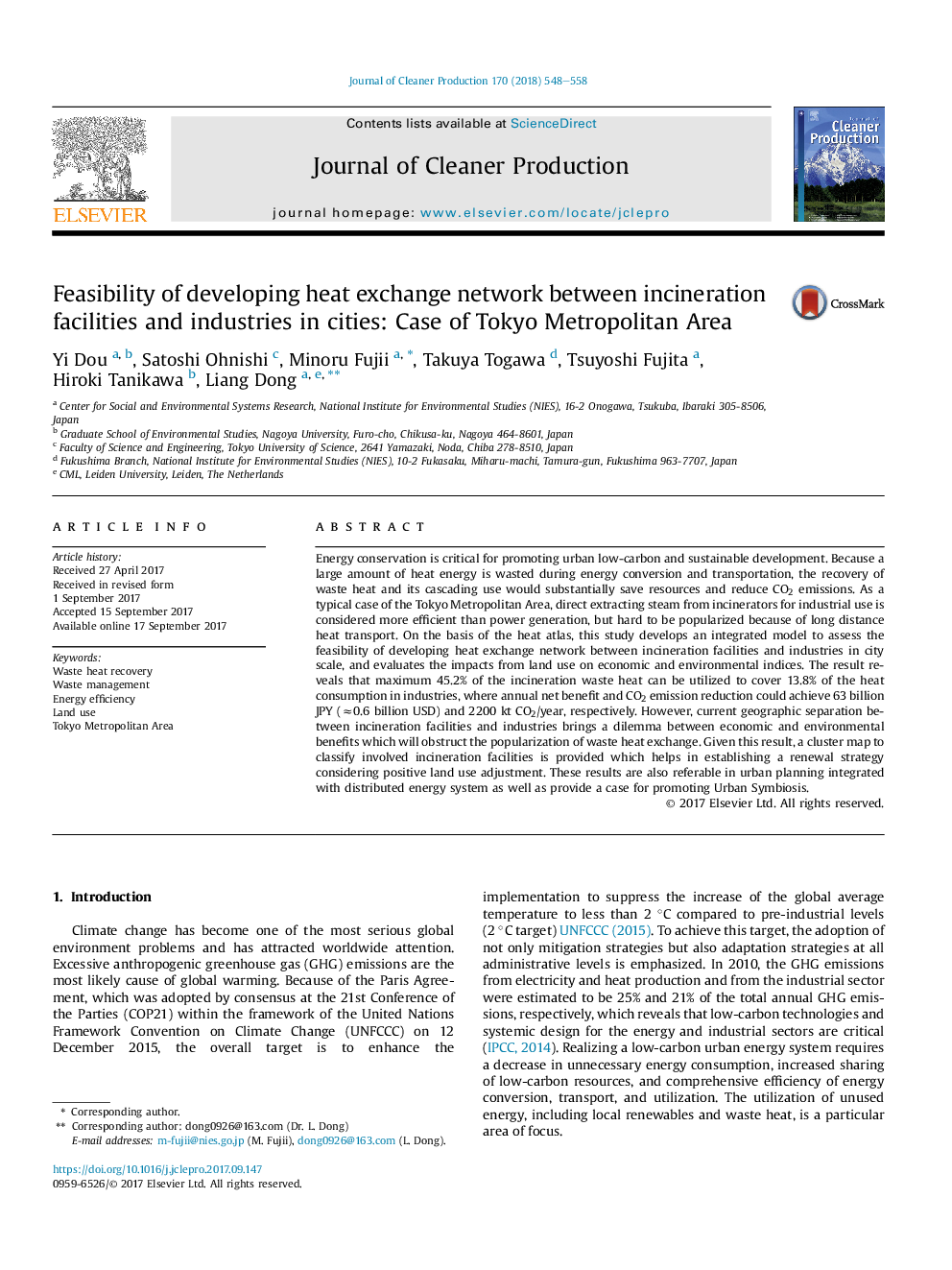| کد مقاله | کد نشریه | سال انتشار | مقاله انگلیسی | نسخه تمام متن |
|---|---|---|---|---|
| 5479240 | 1522084 | 2018 | 11 صفحه PDF | دانلود رایگان |
- Regional scale planning and assessment system for waste heat exchange is developed.
- Current land use configuration reveals negative for popularizing heat exchange.
- A strategy of renewing existing incineration facilities is proposed for efficient waste heat use.
- The importance of integrated urban planning with waste heat recovery is highlighted.
Energy conservation is critical for promoting urban low-carbon and sustainable development. Because a large amount of heat energy is wasted during energy conversion and transportation, the recovery of waste heat and its cascading use would substantially save resources and reduce CO2 emissions. As a typical case of the Tokyo Metropolitan Area, direct extracting steam from incinerators for industrial use is considered more efficient than power generation, but hard to be popularized because of long distance heat transport. On the basis of the heat atlas, this study develops an integrated model to assess the feasibility of developing heat exchange network between incineration facilities and industries in city scale, and evaluates the impacts from land use on economic and environmental indices. The result reveals that maximum 45.2% of the incineration waste heat can be utilized to cover 13.8% of the heat consumption in industries, where annual net benefit and CO2 emission reduction could achieve 63 billion JPY (â0.6 billion USD) and 2200Â kt CO2/year, respectively. However, current geographic separation between incineration facilities and industries brings a dilemma between economic and environmental benefits which will obstruct the popularization of waste heat exchange. Given this result, a cluster map to classify involved incineration facilities is provided which helps in establishing a renewal strategy considering positive land use adjustment. These results are also referable in urban planning integrated with distributed energy system as well as provide a case for promoting Urban Symbiosis.
Journal: Journal of Cleaner Production - Volume 170, 1 January 2018, Pages 548-558
